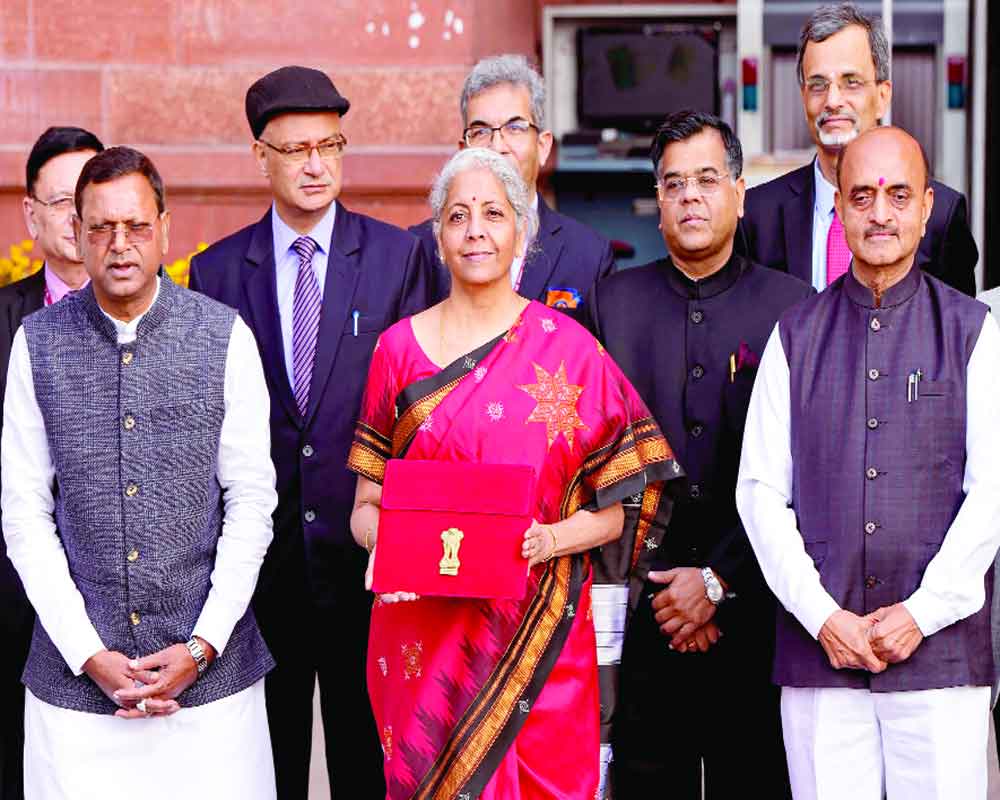The 2023-24 Budget has proved all pundits wrong as they had predicted it to be a political Budget before the 2024 Lok Sabha elections. The last full-fledged Budget before the general elections is not populist on any parameter. It takes confidence and commitment to stick to the fundamentals of prudent fiscal management, when it makes complete sense to go all-out political. This attribute which was also visible during the handling of the Covid-19 crisis will keep the economy resilient.
The highlight of the Budget has to be the increased allocation for capital expenditure, which was hiked by 33 per cent to Rs 10 lakh crore and the total capex is expected to be around 13 lakh crore. After two consecutive years of blistering growth in Government capex, there was an expectation that the Centre would step off the accelerator and make more direct cash transfers under various social sector schemes. The increase in capex under this context is indeed a pleasant surprise.
The Budget continues to focus on the smooth functioning of the economy. Capital allocation for collateral-free lending to the micro, small and medium enterprises (MSME) sector has been increased to Rs 9,000 crore. This will lead to an incremental lending of Rs 2 lakh crore to this sector. Customs duties have been reduced on a number of commodities to make manufacturing in India more competitive, with raw material availability at lower costs. These steps, together with the continued work on the ease-of-doing-business, will help the micro, small and medium enterprise sector in a major way.
Relief in personal income tax was widely demanded and the Budget has lived up to the expectation of the taxpayers. An individual can now earn up to Rs 7 lakh per annum and not pay any income tax. This is a 40 per cent increase over the current exemption limit of Rs 5 lakh per annum and has led to considerable rejoicing in the middle class. The relief has also been extended with people with very high levels of income. The surcharge on income above Rs 5 crore per annum has also been reduced and the highest marginal rate of taxation will come down from 42.75 per cent to 39 per cent. The Government has thus shown that it is not afraid to provide relief even to the rich if it believed that the rate was too high and political considerations did not come in the way.
This year’s Budget is also a document for the future. The Government has listed seven priorities that will guide policy making on the road to 2047. These have elements of green growth and energy transition while not losing sight of inclusive development and reaching the last mile. The focus and commitment to sustainable growth can be seen from schemes like Mishti, for Mangrove plantation, along the coastline and Amrit Dharohar, for preserving biodiversity in wetlands. Scrapping of old vehicles also finds a detailed mention in the Budget. Establishing a centre of excellence for Artificial Intelligence (AI) shows that the Budget has ambition. The Skill India scheme will, henceforth, include AI, robotics, 3D printing and so on. The Government plans to set up 100 labs for the development of 5G services.
The Government’s support to the agricultural sector and its commitment to the rural economy are evident from the setting up of the Agriculture Accelerator Fund and the millet development programme. Schemes such as GOBARdhan yojana and facilitating natural farming are a case in point. The target for credit to the agriculture sector has been fixed at Rs 20 lakh crore. It will ensure that the agriculture sector continues to grow at a healthy rate.
A major achievement has been the management of fiscal affairs. Several challenges on the macroeconomic front that stemmed from external factors, and were unseen at the time of the presentation of the Budget last year, unfolded as the year rolled by. The actual expenditure on food and fertiliser subsidy for the current year is much more than what was initially budgeted, while the excise tax collected dipped due to excise duty cut on petrol and diesel by the Central Government. Despite this, the Narendra Modi Government has managed to achieve the budgeted target of 6.4 per cent for fiscal deficit for the year 2022-23. The fiscal deficit target for the coming financial year has been put at 5.9 per cent of GDP. Thus, the march on the path of fiscal consolidation continues and while there is an absence of a glide path, the Government has committed to bringing it down to the range of 4.5 per cent by the year 2025-26.
A Budget that is not swayed by considerations of politics shows the maturity of the Government and the confidence it has in the ability of Indian voters’ judgement to reward performance over rhetoric. This Budget is, therefore, a historic document and shows the nature of changing politics unleashed by the Modi Government. This Budget will ensure that the fundamentals of the economy remain solid and the next Government will be able to build upon it.
(The writer is a Supreme Court advocate)


























